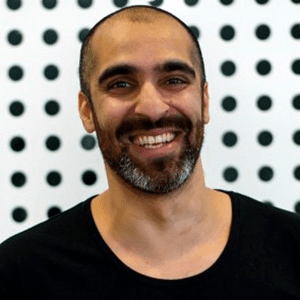

#51: The paradigm shift in attracting and retaining talent
Kim Seeling Smith, CEO of Ignite Global, award-winning author, speaker, and future of work expert is Stephanie’s guest in this episode.
Kim shares her insights about The Great Resignation and the Future of Work, sharing key tips on what businesses of all sizes can do to bring in the right talent and explains the paradigm shift in hiring.
This podcast is a must-listen for business leaders of any size organisation and will give you practical tips that can be implemented immediately.
In this episode you’ll hear:
- What the great resignation is, what prompted it and what it means in Australia
- Insights on the Australian skills shortage and war for talent
- How to compete with other businesses to get “unicorn candidates” through understanding your purpose and values
- Key, actionable tips to help with the hiring process
- Top tips for engaging and retaining employees
Stephanie: Welcome to TEC Live. Stephanie Christopher here, CEO of The Executive Connection. We connect leaders with a trusted network of people who help them succeed.
Leah: 2022, they’re saying, is the Great Resignation.
Stephanie: Apparently.
Leah: Do you think it’s true?
Stephanie: Are you going anywhere, Leah?
Leah: Not that I know of.
Stephanie: Well, I think we really should listen to our guest on TEC Live today, Kim Seeling Smith. Kim is the CEO of Ignite Global, a workforce consulting and training solutions organisation. She helps make an impact with diverse organisations from the big end of town, and also to SMEs, across 32 different industries in nine countries. Kim’s an award-winning author, speaker and a future of work expert. We are lucky to have you in the room right now.
Kim: Thank you. Thank you.
Stephanie: Welcome.
Kim: I’m lucky to be here on TEC Live. Very excited about this.
Stephanie: What a start. So, we’ve heard about it. It was kind of a thing in 2021, Josh Frydenberg’s calling it something else. Tell us about the Great Resignation.
Kim: Yes, the Great Resignation. We first started hearing about it almost a year ago. The Microsoft study back in March of 2021, that said that 40% of the global workforce was looking to leave their employer in 2021. And I’ve been tracking this very, very closely and I’ve noticed that Australia’s about three to four months behind and Australia’s also a little bit different. So Josh Frydenberg’s comments, I could just see all of my clients just doing a face palm, when he said everybody should go out and look for a new job. And I’m paraphrasing obviously, but if you want a better pay rise, you should look for a new job. I’m not so sure that’s true. And I’m not so sure that will do a great service to our economy or our employers. However, what I do agree with, with the honourable Mr. Frydenberg, is that in Australia, it’s not the Great Resignation because you see in the US and the UK, the workforce participation rates are actually going down.
Baby boomers and even some Gen X are opting to retire early, but here in Australia, that’s not happening. People are not leaving and not going back into the workforce. What we are seeing though, is many, many, many people are leaving for other opportunities.
Stephanie: Okay let’s go back to the Microsoft study last year. How did that play out? Did 40% of the workforce resign?
Kim: I don’t know that 40% resigned. I do know, I got a couple of stats to share with you. So the last time I looked at the US stats, they had record numbers of people quitting jobs, either to go into others or to opt out. And in fact, they had, oh gosh, I think 39 million people at last count, who have changed jobs. So, that is record numbers. Here in Australia, if you look at the, I think the number of people per LinkedIn, the number of people who left their employment in 2021 over 2019, was 26% above 2019. So, we are seeing, there’s a lot of movement, a lot of movement in the marketplace.
Stephanie: And I know that initially the idea was about how your employer treated you through the early days?
Kim: Still is.
Stephanie: And that’s still the main issue for this, isn’t?
Kim: Yeah. There are a couple things that are happening. If you, in fact, if you kind of triangulate the data, you’re seeing after two years of a pandemic and in and out of lockdowns here in Australia, we’ve really had a chance to reflect. And we are no longer willing to put up with things that are not exactly what we’re looking for in our employment. We see people leaving because employers are now calling their staff back to work and they want to, and they want to-
Stephanie: Back to work, or back to the office?
Kim: Back to the office. Thank you for that correction, exactly right, back to the office. We’re seeing people leave because of that reason. We’re also seeing many people leave because they don’t like the manager that they’re working for. We’ve had a chance to reflect and to really understand what’s important to us. The other thing that’s going on, is this systemic skill shortage that Australia… This is, I remember a client of mine called me last July, right after we went into lockdown about a month after we went in lockdown, late July, early August. And he said, calling for two reasons, ‘Number one, find out how you’re going through lockdown?’ Which I thought was very nice. ‘Number two.’ He said, ‘I want to find out how much fun you’re having telling your clients, I told you so?’ I said, ‘Jamie, what are you talking about?’ And he said, ‘I remember having a conversation with you about the skill shortage 10 years ago.’
Stephanie: And then some.
Kim: Yeah, exactly. I mean, McKinsey wrote the war for talent in ’97.
Stephanie: ’97, right. Yeah. Yeah.
Kim: So he said, ‘I didn’t believe you then.’ So, this is a challenge that we have seen come for a very long time. And it’s systemic because our birth rates are declining. Australia, the population is getting older. People are choosing to retire. And I think I saw one stat, a few years ago, that said that it’s not expected to turn around demographically until about 2032. We’re looking at another 10 years of really critical skill shortages that are not going to be solved, even when we open the borders and start to bring people in.
And we have to also remember that there are people living in Australia, some of whom like myself, as you can tell my accent, I’m not from around these parts. Some of us are wanting to go back to our country of origin for a period of time. So, I’m not so sure how the immigration rate is going to settle out in the next couple of years. We may see people leaving that we don’t expect, not only bringing people in.
Stephanie: Yeah. And I can think of young people I would’ve had working for me over many, many years, who might have been from Ireland, the UK or somewhere else, that would count on having that few weeks back home.
Kim: Exactly.
Stephanie: Each year. And they haven’t been able to do that for two years.
Kim: Exactly.
Stephanie: Maybe it’s two or three years. And so they could well take off for a longer period now.
Kim: Yes.
Stephanie: So, given that, given that for all the demographic, the health, the global picture, that employers are going to be struggling with the war for talent, if they’re hiring and are going to be more than ever needing to retain their teams.
Kim: Yes.
Stephanie: Let’s deal with those two things.
Kim: Yes.
Stephanie: Because I know you, Kim and you are really, really good on the hiring part.
Kim: And the retention part.
Stephanie: And the retention part. But I used your model for writing an ad when I hired a COO. Now I knew her.
Kim: I did not know this.
Stephanie: I did.
Kim: Do tell Steph.
Stephanie: I did. And so let’s start with it. And I actually ended up knowing her, so she would’ve come to work for me anyway. But I wrote the ad using your model. And she said, ‘What a great ad.’ So at least I impress someone I’ve known for 20 years with the ad for the position.
Kim: Fantastic.
Stephanie: Why don’t we start… Let’s start with the positive. There’s a war for talent out there. How can I position myself, as an SME that may not have the money, that someone has and I may not be as nearly as sexy as some of the big digital companies out there. How can I compete then, to get the needles in the haystack that there are?
Kim: Those unicorn candidates.
Stephanie: Yes.
Kim: We have for the last six months, seen stats in Australia that up to 75% of the Australian workforce is at least open to looking. So we have a real opportunity to bring in talent that we may not have had access to earlier. So how do we stand out? It’s actually easier, I think in my opinion, it’s easier for SMEs to stand out than it even is for the big end of town.
Stephanie: Because?
Kim: Because the big end of town is a known commodity.
Stephanie: Yeah. The brand is so clear in someone’s mind.
Kim: Exactly, exactly.
Stephanie: If they’re right or wrong.
Kim: And people are no longer buying brands. What they’re buying, and you would’ve seen it on the spot on success profile framework that you use, people are buying purpose. What is the impact that you make on the world? And I am not being hyperbolic because candidates, I mean, that’s one of the reasons that people are leaving because they don’t feel like where they’re working currently is really making a tangible impact. And let’s face it. We’ve got a lot of problems in the world. And we want to spend our waking hours doing something about it, be it something large or something small. So, the very first thing that you can do to set yourself apart, is you can really understand what it is that you do that makes an impact on the world. Now it may be on your customers, but that has a ripple effect.
So take some time and really understand that purpose and articulate that so that you are unique and different. If you’re an engineering firm, how do you differ from all of the other engineering firms? And you do, because you have certain client space that you work in, you may utilize different technology. So, there are some things that you can bring to the forefront. The second thing is, what are your values? People want to work with a company whose values are aligned with your own. So what are your values? And these aren’t the values that look nice behind some receptionist-
Stephanie: Integrity.
Kim: Exactly right. Exactly right. So how, and I always take a book from, or take a page from the Atlassian book because they have some very real and very authentic values. And they’ve been written up in, I think, HBR and other famous case study magazines for the values and how that’s helped them grow as an organisation. And it’s important to understand what your values are, but also then to articulate it to prospective candidates, so that they can see themselves in you. So that you become part of their tribe and you get that right, you get the purpose right and you get the values right. That’s almost a magnet that will magnetically attract the right people and repel the wrong ones.
Stephanie: Nice.
Kim: And the other thing that I would say is, hire a marketing person to help you write those job ads, think about it. For those of you listening out there, if you are going to advertise, be it print advertisements or online advertisements or social media campaigns, you’re going to hire a marketing person to help you craft that. Why are we still writing job ads when arguably it’s more difficult to find candidates in this market, than it is customers? So hire a marketing person, get that professional help to really help shine the spotlight on who you are and use video. We live in a TikTok world. So, describe who you are through video.
Stephanie: Really good. I’m thinking about Mark Puncher and the podcast we did with him on TEC Live. So that would be a really nice accompaniment for someone that this is really resonating with.
Kim: Oh perfect.
Stephanie: So EVP is his whole thing.
Kim: Perfect.
Stephanie: And he’s a perfect ex marketing guy. Well, he still is.
Kim: Perfect. Perfect.
Stephanie: Terrific. There’s something important about the attraction. And that you can stand out, as you say, even if you don’t have a flashy logo on the ad, that someone will go straight away or whatever.
Kim: Exactly.
Stephanie: Apple, let’s just think of something. Okay, that’s really good. What other key tips would you have for a CEO or business owner in bringing in talent? So absolutely, attraction, the way you write the ad, what else?
Kim: As you go through the hiring process, first of all, we have, I hesitate to say this because everybody in HR in your audience is going to go, ‘What?’ But we’ve put more responsibility on HR, not that they deserve, certainly not, but that as managers and senior leaders, we’ve aggregated the responsibility that we have. And this is, and I want to talk about retention here in a second, this is the number one problem that we have with employee retention. Is that connection between manager and direct report has been broken and that needs to be fixed. It starts with the hiring process, managers need to take more responsibility in the recruitment process. As a matter of fact, one of my mantras is, we have to stop treating recruitment, like filling a takeaway order, and we have to start treating it like business development.
We have to develop a pipeline of candidates and develop relationships with them so that when the needs of their career intersect with the needs of your organisation, then it’s a no brainer. Managers have to be integrally involved in that and they have to be on the forefront of the interview process, on the hiring process. So, instead of having HR get back to them, get back to them, let them know that you’re really interested in them. Keep them interested. That candidate experience through the hiring process is everything. And the hiring manager needs to really run that.
Now HR and talent acquisition can be a huge support, but the hiring manager needs to take responsibility. And what better way to roll out the red carpet to some of these unicorn candidates, than showing a personal interest in them? That’s one thing that I would say. Speed is everything, speed to from the time that you understand that you need to hire somebody, until the job offer is made. I know some companies that are doing it in three days. And they are just jumping through hoops because you wait and the candidate’s gone. So candidate experience is everything.
I had a conversation this morning, with a client that I’m about to embark on an entire recruitment project with. And their talent acquisition team, who should be at the forefront of understanding that it’s a candidate’s market, they’re still treating prospective candidates like, we’re doing you a favour by interviewing you. And that has to change. That absolutely has to change. So it’s candidate experience and manager responsibility.
Stephanie: I know someone, actually a close friend of mine, who applied for a role with a bigger organisation, heard nothing for months.
Kim: Yeah.
Stephanie: He ended up getting the job. He then had the interview and then heard nothing for weeks. He had other stuff going on. But when they, I think he then got something from HR saying, can you confirm your address for the contract? And the whole thing was like, this is unbelievable.
Kim: That’s so old school.
Stephanie: Well, it’s old school, isn’t it?
Kim: It is.
Stephanie: And I love what you’re saying about the hiring manager being key to this.
Kim: Absolutely.
Stephanie: And treating it with the same respect and consideration that they would a key client they’re trying to bring in.
Kim: Yes. The biggest paradigm shift that, everything that we teach at Ignite Global, my initials are KSS, Kim Seeling Smith, but they stand for something else as well, right? Everything that we teach, we break down into very simple processes and systems. What we struggle with, is getting that paradigm shift from the managers to understand that it is a new world and the pushback that my team and I always get is, we don’t have the time.
Stephanie: Yeah.
Kim: You don’t have the time not to. Because it costs so much to have disengaged employees. It costs, up to 33% of their annual salary goes out the door in lost productivity for everybody that’s not fully engaged. Costs so much to replace people, if you make a bad hire. Hudson Recruitment did a study a few years ago that said that 44% of their survey participants rated their last hire as not good. So why go through that? It’s Groundhog day. Take time up and do it right. Spend time with prospective candidates, spend time with the people who are currently working for you, engage and retain your staff. If you have a recruitment problem, the first question that I’d be asking yourself is, do I actually have a retention problem?
Stephanie: So let’s talk about retention. Given the great reshuffle, the great whatever. Or actually, really good practice for your business. Talk to me about what could be the top tips for retention right now.
Kim: So easy stuff. It is so easy. We twist ourselves in knots thinking about how do we engage and retain our staff? What new benefits? I see so many articles about new benefits to retain staff. Benefits are nice but they’re icing on the cake. We need meat and potatoes and that meat and potatoes to sustain our businesses is the connection between manager and direct report. There is so much research out there. Just screeds of research out there. All we need to do, is make sure that our managers are connecting with our staff, with their direct reports. That they’re studying and meeting the needs of those people. Now, that might sound like something that’s very daunting.
One of the, I think probably my very top request through TEC, when I’m asked to speak for TEC, is my mind reading for managers program, which is based on a model that I created back in, oh gosh, 2010. And I created it initially, from reverse engineering the 5,000 exit interviews that I did during the previous 15 years when I was a recruitment consultant. 5,000 people walked into my office and told me why they wanted to leave. I put that model together and it has stood the test of time. And it’s really not difficult. It’s things that everybody wants. They want to be recognised. They want to be appreciated. They want to have a voice. They want to understand what’s expected of them, what they need to achieve and how success is measured. They want to spend time working towards their strengths, doing things that they love. It’s not difficult.
So, if you spend time connecting with your staff and really understanding what drives and what motivates them and delivering on that. Or managing their expectations when you can’t, because we can’t be all things to all people, your, and I’ve got loads of case studies from my own work that says that is the key. All you need to do is spend time with your staff, get to know them, have the right conversations that go beyond what managers typically talk to their employees about, which is business as usual, goals, KPIs, or, how you doing staff? Just wanted to check in with you. Now, both of those, those conversations are really important, but those are two ends of the continuum. And the real richness in those conversations is the bit in the middle. Those things that I used as examples before.
So, it’s treating them as a whole person and understanding that different people have different motivators and taking the time to get to know what those are. And it’s easy as that. It really is. You hire the right people, you spend time with them, you work with them as individuals to figure out what interests them, what motivates them. You deliver it, you manage their expectations. Your employee problems virtually, they don’t disappear, but they drastically reduce.
Stephanie: How can a manager do this if it’s not their natural skill set?
Kim: Yeah. Really good question.
Stephanie: Thank you. It’s my job.
Kim: And this is the challenge that we have. Because you look at the ’80s and ’90s, 1980s and ’90s. We went through huge cost cutting exercises. We eliminated a whole layer of management and we pushed more down on our managers. Our managers now have day jobs and they have things to do. And people normally, in days past, have been promoted to manager based on their technical skills.
Stephanie: That’s right.
Kim: And they don’t have, some of them, don’t have those innate abilities. Unfortunately, there is no easy answer for this. That has to change. We have to promote managers based on their will and their ability to manage. And in order to do that, we have to create multiple career paths so that people without that natural talent, can become technical specialists or can become business development specialists. Can make their mark on the organisation in the best way that they know how, bringing their skills and abilities.
And this is a culture change. And this is not easy medicine to swallow, but honestly, I don’t see any other solution. So, until, and that’s a multi-year process for a lot of organisations. Until we can do that, until we can really understand what the abilities are to be good managers and to promote and to find something to do for the managers who shouldn’t be managers. We really need to teach them some basic skills. And I say basic, but they’re maybe not so basic, emotional intelligence, absolutely number one, and communication skills. Sitting down and having the right conversations. And like I said, the mind reading for managers program, is the number one requested program through TEC.
And that is exactly that, it teaches managers, gives them a structure and a framework to sit down, have those conversations based on that nine currencies of choice. And that, in fact, I created it for, initially in 2012, I created that program for an engineering client. And one of the criteria that actually it’s the same CEO that called me last July. Jamie, coincidentally, one of the criteria that Jamie had is, I need you to provide a structure to people who don’t have natural emotional intelligence, to do the things that they would do if they did.
Stephanie: I’m thinking of a small business owner that doesn’t have the luxury of an individual contributor. Senior, senior individual contributor. Or maybe they need to rethink, the future of work is going to play out with a whole lot of different structures.
Kim: It is. Yes. Yes.
Stephanie: So that’s another conversation. But I can see a lot of businesses having a struggle with managers, you may get by on the attraction and hiring, but they may struggle with that connection. And there’s nothing worse, as an owner or leader of a business, than someone saying, ‘I’m not getting it from my manager.’ And you kind of, ‘Oh, now what do I do?’ And that’s a challenge, I think
Kim: If they don’t, if they physically, if the budget, if the size of their business, and it doesn’t actually have to be a large business. I did a recruitment review, sorry, a retention review, an employee retention review for a small company up in Queensland. They had 50ish staff at the time, 57% turnover for three years running, 55 to 57%. Did an entire employee retention review. And I came back to them and I said, ‘Your number one problem, is that the directors are working in the business. And they’re not.’ I said that more artfully, more articulately than that. But basically it was, ‘You guys shouldn’t be running the business. You should be running the business. You shouldn’t be interacting with staff.’ They found one of the state managers to promote, to be the general manager. He didn’t lose anybody in a year and a half because he’s got that.
So, I would question, can you afford not to bring somebody in with those skills? And if not, if the answer is truly no, it’s me and two or three staff and I’m not good with people, then build that into your business plan. Build it into your business plan that you’re going to be a training ground that, make that part of your EVP. Bring in people who want to learn specialised skills or something that you have to offer, figure out what that is and plan on keeping them for six months, 18 months a year. Or, use just-in-time talent, use contractors. Somebody that is-
Stephanie: Variable resources.
Kim: Absolutely right.
Stephanie: There’s so much here. And I love it that you’ve started with kind of a bit of a culture zeitgeist thing about the Great Resignation. And spoken practically about what every size business can do. And something has really resonated here. It all comes down to the manager.
Kim: Absolutely.
Stephanie: And what, how well you are selecting, developing, rewarding your managers and the critical role that they play in your organisation. Kim, that was fantastic. There was so much to cover there, and Kim Seeling Smith, thank you very much for joining us.
Kim: Thanks Steph, my absolute pleasure.
Stephanie: Discover more about TEC at tec.com.au



